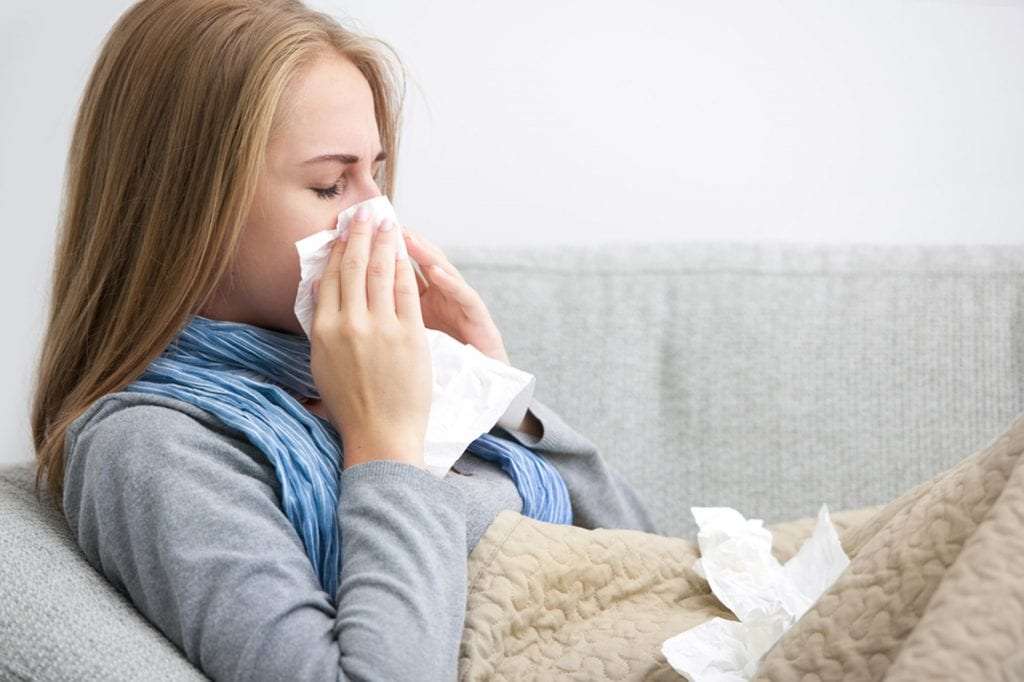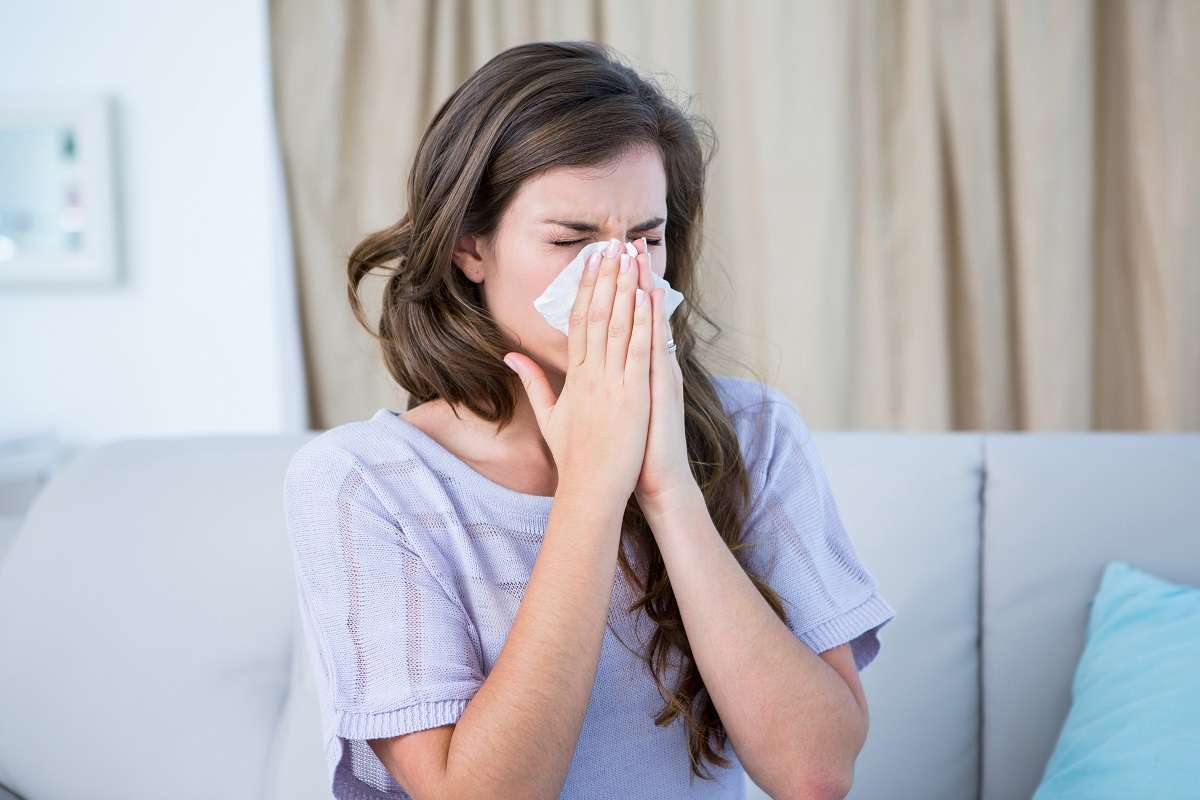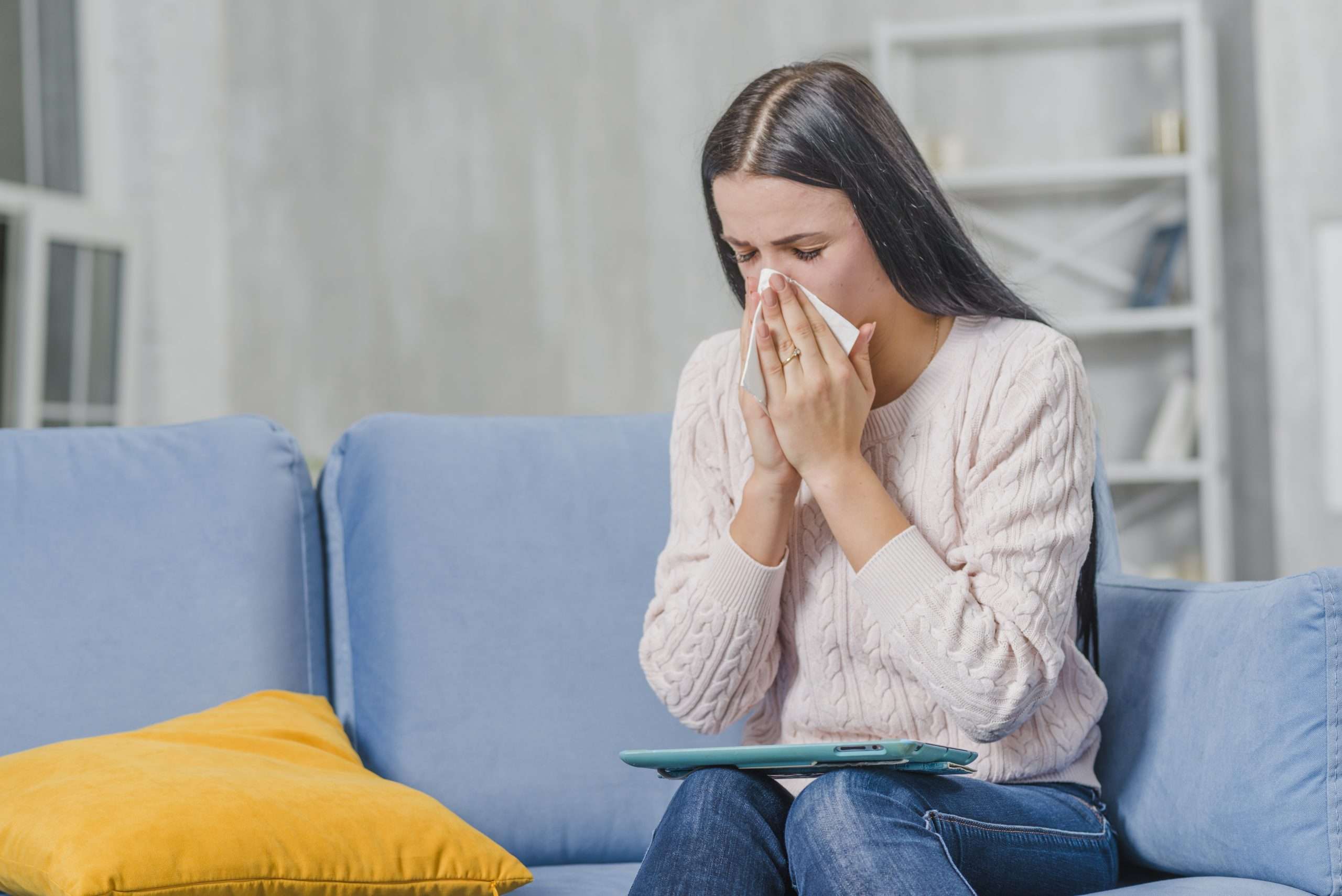Things To Do To Reduce Indoor Allergens
Various other ways can help you in reducing Indoor Allergens.
- Control Dust Mites A clean and uncluttered home is ideal for keeping dust mites at bay. Dont overstuff the room with fabric furniture, heavy drapes, or permanent carpets that are a pain to clean every day. Instead, use throw rugs, wooden furniture, washable curtains to reduce the chances of dust mites.Using allergen-resistant covers for the pillows or mattresses is also an effective way to control dust mites. Regularly washing the pillows, beddings, toys, bedding in hot water kills the dust mites.
- Pollen Pollen is a prevalent allergen, and it peaks during the spring and fall seasons. The only way to control pollen is to keep the doors and windows closed during the pollen season. Using air conditions to control humidity and dust mites can also help. Changing the filters often also reduces the chances of pollen coming back inside.
- Avoid Mold Spores Mold is common in areas with high moisture, like the bathroom, kitchen, or garden. To avoid mold spores:
- Limit the shower time during bathing
- Using dehumidifiers can reduce dust mites as well as mold
- Humidity monitors can be used to monitor indoor air quality regularly
- House plants can also cause mold, so limit the plants indoor
- Any damp area should be fixed immediately
- Water leaks for a long time can also cause mold
- Clean the mold as soon as you see it to prevent it from growing. Then, check back in a week at the same place. Always cover your face while doing so.
How To Reduce Indoor Allergens
The first step is to be aware of the pollen levels. If there are specific days you plan on being outside, check the pollen levels along with the weather report. You can also plan outings when the levels are going to be low, making for a much more enjoyable day for everyone involved. Heading out earlier in the day can also help to reduce symptoms.
If you live in an area with poor air quality, pay attention to pollution levels. You can get daily information from weather reports or by visiting the Environmental Protection Agency.
In addition, to prevent pollen from spreading inside your house, wash your hands once getting inside and toss your clothes and linens in the dryer rather than hanging them outside. This will help you in how to control dust and dander in your home, as pollen and other allergens can collect on our clothes and get in the home.
How To Reduce Allergens Across Your Entire Home
Preventing allergens from entering your home in the first place is just as important as cleaning and removing any existing allergens. Here is what you can do to keep allergens out:
- Manage the temperature and humidity in your home Many allergen sources such as mold and dust mites thrive in warm, humid environments. By keeping the relative humidity in your home below 50% and the temperature cooler, you can help prevent their growth and spread in your home.
- Guard against pollen By using your central heating and air system instead of opening windows and doors, you can help keep pollen from entering your home. Additionally, you should wash clothes after going outside and give your pet frequent baths to help reduce the amount of pollen that enters your home.
- Control pests By keeping your home free of food debris and plugging up any insect-friendly cracks and crevices, you can keep your home free of pest infestations and reduce the concentration of insect allergens in your home.
To remove allergens that are already in your home:
It may take some effort, but it is possible to make your home a haven from allergens and allergy symptoms. By combining source control and allergen removal methods, you can help prevent allergens from building up in your home.
Post Tags
Written byCatherine Poslusny
Read Also: Kit Kats Peanut Allergy
Banish Cats Dogs And Other Animals From Your Bed To Reduce Animal Dander
Did you know 3 in 10 people have allergic reactions to their pets? We all love our pets, but if you and your family suffer from indoor allergies you will want to keep the animals out of the bedroom. Another good practice is to bathe pets once a week to reduce the amount of dander they shed. Also, to help the transition, think about getting them their own bed to keep them out of yours.
Where Does Dust Come From

Dust can form from pollution, volcanic eruptions, wind or soil. Depending on where it comes from, the small particles can be comprised of tiny meteorite pieces, human skin cells, outdoor soil minerals, paper fibers, textile fibers, animal and plant pollen. While dust can linger around many surfaces, we people rarely notice until an accumulate develops. Dust is often grayish when enough builds up. By leaving surfaces untouched and uncleaned, dust will gather and spread.
Also Check: Does Claritin Help With Itchy Skin
Get Rid Of Fluffy Rugs
No matter how cozy they feel, thick, fluffy rugs can easily trap dust and allergens. If you do prefer rugs to cover your hardwood floors, choose a short-pile or no-pile style instead. The short-weaves made from polypropylene or sisal are durable and easy to clean. Or if you want to splash out, wool is more mold-resistant than synthetics.
A Fresh Breeze Isnt Always Fresh
Signs of spring may make you want to open your windows wide, but that can lead to unwanted pollen particles entering the home and causing symptoms like sneezing and eye irritation. And before you reach for the air fresheners and candles, be aware that chemicals found in these items can spur asthma attacks. Your best option is to opt for natural aromas from the oven. Its best to avoid anything with strong odors or smells.
Read Also: Is Clarinex An Antihistamine
Set A Regular Cleaning Schedule
In addition to washing your bedding once a week, you should also dust your entire house once a week. Be sure not to use a feather duster which will just toss the dust around without removing it.
Instead, use a damp cloth to wipe up all of the dust completely. Launder the cloth immediately after use or simply throw it away.
Allergy Proofing Your Bedroom
Your bedroom is a prime place for allergens, and itâs a room you spend a lot of time in every day. We spend a third of our life sleeping, or at least attempting to go to sleep!
Start by making a regular cleaning routine, including vacuuming once a week, at least, to minimize allergens. This includes dusting with a damp mop or cloth, vacuuming, and washing bedding regularly.
Next, Use dehumidifiers in humid climates. If you use a humidifier in your bedroom for drier climates, make sure that the humidifier is cleaned regularly.
Make your bedding allergy friendly! Purchase allergy-friendly bedding including mattress pads, duvet covers, pillows, and pillow covers. The best products can block allergens, like dust mites, from getting through. These dust mite proof covers should be easily laundered. These products should also be made without chemicals known to cause allergies or irritants.
If you have pets, youâll want to keep them out of the bedroom. Designating the bedroom as a pet-free zone helps to keep outdoor allergens, and pet allergens, out of this safe space. If you must have pets in the bedroom, itâs best to not have them on or in your bedding. We know this can be tough, so if your pet does share the bed with you, make sure you wash your bedding regularly. Pets should also be brushed regularly and bathed to help reduce dander.
Read Also: Are There Peanuts In Twix
Recruit A Cleaning Detective
Recruit your favorite cleaning detectives and have them investigate different areas of the house to determine what needs cleaning up. After inspecting a room, they can list out if a bed is unmade or if thereâs a toy on the floor, for example. This is a fun and creative way to have children help create a chore list and identify messes.
Since weâre exposed to allergies almost every day, itâs important to stay on top of allergy prevention, especially if you or a family member are prone to allergic reactions. Leaving allergies unattended can be problematic as symptoms can worsen over time, so keep a close eye on how exposure to allergens may be affecting a loved one.
If the above allergy-proofing tips did not eliminate your or your familyâs allergy symptoms it may be time to take an indoor and outdoor home allergy test, or speak with your healthcare provider to discuss options.
Don’t Forget Your Filters
First, make sure the filters you already have are in good shape and clean, like those in your air conditioning units or your central heating and air conditioning system. Check that they’re the right ones for the job.
You can also add filters to your home if you don’t have them, either as stand-alone room units or in your central heating and air system.
The American College of Allergy, Asthma, and Immunology has some recommendations:
- For a single room, you want an air cleaning unit with a HEPA filter. Make sure its CADR is right for the size of the room.
- If you have a central heating and air conditioning system in your home, you can turn it into a filtration system for your whole home by installing a better air filter. Permanent and disposable options are available.
Read Also: Zyrtec Allergy 24 Hour 10mg Tablets
Quick Tips To Reduce Allergens In Your Home
- Pin
This post has been underwritten by Lysol Air Filters. As always, opinions are 100% my own.
Ah, allergens. I didnt know much about allergies until I met Brad. I never had allergies and neither did anyone in my family. Brad has relatively bad allergies and now that we have health insurance , Im urging him to see an allergist so we can pinpoint exactly what hes allergic to. Since we havent had to ability to figure out exactly what hes allergic to, I try to reduce the allergens in our house as much as possible. So today I thought Id share some of my tips with all of you in case you or your partner or children also suffer from allergies.
Now these are quick tips that you can do. Im not going to go over drastic tips like ripping out all of your carpet and going with hardwood flooring throughout. These are easy, inexpensive things I do to reduce the allergens in our house.
1. Dust, then vacuum. Because when you dust, some of it will be carried off the surface youre dusting and settle on the floor. So if you vacuum after you dust, the vacuum will suck up the dust, leaving you with less dust in your house.
3. Dont let your pet sleep with you. If youre allergic to pet dander this is kind of a given. It doesnt really make sense to sleep in a bed with something youre allergic to for 6-8 hours every night. If youre definitely allergic to pet dander, you may want to consider having your pet sleep in a different room.
What do you do to reduce allergens in your home?
Rinse Out Your Sinuses

An inexpensive and quick solution to relieve allergy symptoms is flushing your sinuses with a saline solution. You can purchase ready-made solutions from the store or create your own with 1 quart of water, 1.5 teaspoons of salt, and 1 teaspoon of baking soda. Rinsing out your nasal cavity rids your system of mucus and other allergens.
You May Like: Can Allergies Affect Lymph Nodes
Keep Your Bedding Clean
You should be sure to wash your sheets and blankets every week in very hot water. Water that is between 130-140 degrees Fahrenheit will kill dust mites.
Additionally, its smart to add several drops of eucalyptus essential oil to the wash cycle. Research conducted in 1993 and published in the publication, Allergy & Clinical Immunology found that eucalyptus oil added to the wash eliminates nearly 100 percent of dust mites from bedding.
Cleaning Tips For Dust Allergies
Read Also: Zyrtec.
Factors That Influence Allergens In Your House
The factors that affect the number of allergens in your home vary widely. These include:
Temperature: Heating, cooling and air quality are directly related. Hot or humid homes often have dust mites and mold. To reduce the presence of both, maintain temperatures between 68- and 72-degrees Fahrenheit and humidity below 50%. This will help reduce the breeding of mites or the buildup of mold or mildew. Consider investing in a smart thermostat that adjusts automatically to changes in the environment. Clean or replace small-particle filters in your heating or cooling systems every 30 to 60 days.
Pests: Hiring a professional exterminator helps clear pests from your house. You can also use inexpensive traps from the hardware store. Remove allergy triggers, such as insects and rodents, by thoroughly vacuuming your carpets and washing hard surfaces with a disinfectant. Stop pests from entering your home in the first place by sealing all exterior cracks and other routes of entry to prevent re-infestation.
Mold: During warm weather months, shut doors and windows and opt for air conditioning and dehumidifiers. Clean washable items with a 5% chlorine bleach solution. Always wear a protective mask when cleaning mold and make sure the room is properly ventilated to be safe from harsh chemicals. Periodically check the ceiling and roof for water leaks as an additional precaution.
Clean Your Sofa Often
Similar to carpets, fabric upholstery can be a breeding ground for allergens. This is often the case if any pollen or dust transfers from our clothes into the fabric. Vacuum your sofas with the upholstery attachment on a weekly basis. In addition, put your cushion covers or cozy throws into the washing machine, as these pick up dust daily.
For leather or faux leather sofas, you can easily wipe off pollen, dust, and dander. But you may want to check out how to clean a leather couch to do this properly, without damaging it.
Also Check: Intolerance Medical Definition
Keep Your Carpet And Rugs Clean
Studies have shown up to 85 percent of dust, dander, and pollen comes in on the bottom of shoes. And while carpets can help keep your floors warm and comfortable, they tend to exacerbate indoor allergies. They can trap irritants like pet dander, dust, and pollen, only to re-release them again every time someone walks on the carpet. Worse yet, its virtually impossible to vacuum up particles that become trapped in the carpet.
If you have carpet, be sure to vacuum at least once a week with a HEPA-certified vacuum. Consider having your carpet professionally cleaned at least once a year. Try placing a small, washable mat near your door to help trap dust, pollen, and other irritants before they are tracked into your living space.
Adjust Your Home Life
You may do your best to avoid the outdoors when pollen is ramping up, but there are things you can change inside your home that will help alleviate some seasonal allergy symptoms. If you use heat or air conditioning, use highly efficient filters that keep the indoor air quality within the home up to par. Clean your floors often with a vacuum and keep the air inside dry with a dehumidifier.
Don’t Miss: Green Allergy Pill
To Reduce Indoor Pollen
- Keep pollen out of your home by keeping windows closed. Be aware that you can bring pollen in from outside if it sticks to your hair and clothes.
- Change your clothes the moment you get in, put them in a plastic bag until you can put them in the washing machine, have a shower and wash your hair.
- Wipe down pets when they come in the house after playing outside.
Dust Allergies: Symptoms Diagnosis And Treatments

Common dust allergy symptoms include a runny or stuffy nose, itchy eyes, watery eyes, and sneezing. The allergy can aggravate asthma, which is an inflammation of the airways and lungs. According the Mayo Clinic website, symptoms of asthma include wheezing, coughing, shortness of breath, and tightness of the chest.
Don’t Miss: How Long Does It Take For Fluticasone To Work
Does Vacuuming Help With Allergies
Vacuuming with the right product and filter can severely impact allergies. A clean home with no room for dust mites, mold, pollen is a dream come true for people allergic to them. Vacuuming isnt magic hence vacuuming once or twice will pay for the efforts you make. Use a vacuum with a HEPA filter so that the allergens, which are extremely small in size, do not escape the vacuum from the other end. Some vacuums can spread dust and allergens in the air, so picking the right vacuum also plays an important role.
How Can I Get Relief From Home Allergy Symptoms
Home allergies are caused by allergens, or triggers, that you regularly find indoors. Some, like pollen, are seasonal. Others, like pet dander or mold or mildew, are year-round problems. To reduce these symptoms, you need to address all these triggers. Four ways to do this are:
Also Check: Claritin Medication

